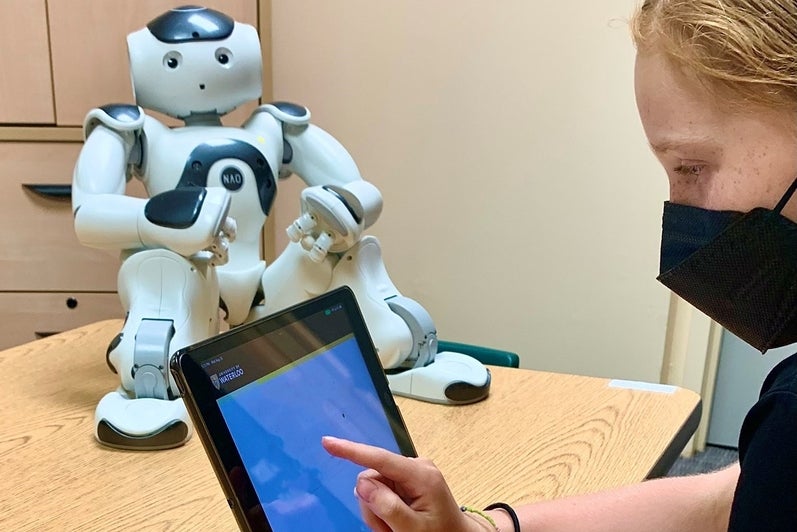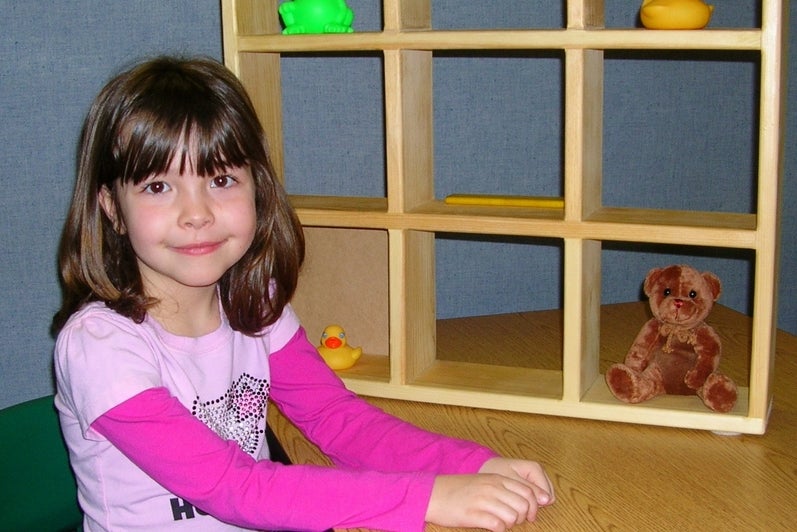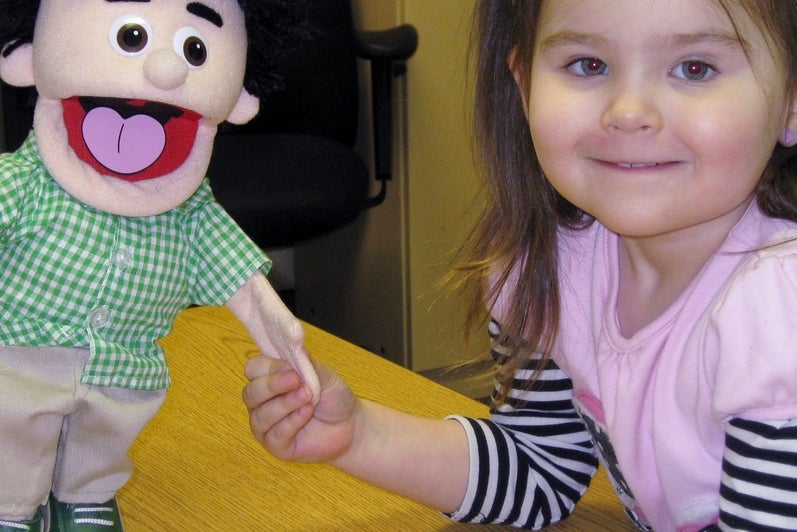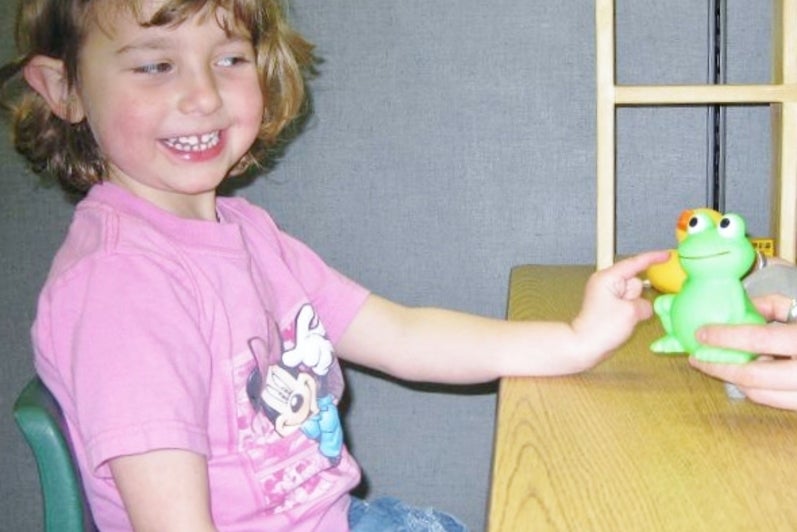Our research examines children and adolescents’ communicative interactions with others (peers, parents, social media, and most recently, with social robots).
In most (if not all) social contexts, successful communication depends on an individuals’ ability to recognize and appreciate their conversational partner’s perspective and modify their behaviours accordingly. While such sensitivity and flexibility may come easily for some people, for others, it may create a challenge.
We examine youths’ sensitivity to social information and whether they are able to use this information in their communicative behaviour (e.g., interpreting statements from others, avoiding ambiguous language, collaborating on a task, etc.). We look at the role that language, theory of mind, and cognitive abilities play in helping youth to be socially competent. In addition, we examine individual characteristics (e.g., temperament) and situational contexts that are associated with youths’ socio-communicative behaviour.
Research Themes:
(1) How well do children, adolescents, and adults use the perspective of their conversational partners?
Historically, children were viewed as ‘egocentric’ in that they had difficulty stepping outside their own perspective. More recent work has found this is not the case, instead, preschool-age children are able to use the perspective of another person in a number of communicative contexts.
- In our lab, we have demonstrated that preschool and school-age children show successful use of a conversational partner’s perspective when engaged in tasks such as interpreting statements from others, detecting ambiguity, and interpreting sarcasm.
We were interested in knowing whether communicative perspective-taking is an isolated skill or something that relates to more broader social effectiveness. In recent work we found that adolescents’ ability to understand the perspective of others was related to their perceived relations with peers.
- There are many individual and contextual factors that affect children’s ability to use a conversational partner’s perspective. In this paper, we outline possible factors that influence children’s success (or challenges) in this area.
- While most of our work has looked at children’s communicative performance, we were also interested in examining what sort of perceptions children have of others based on their (in)effective communicative styles. We have found that children are more likely to trust information from speakers who use successful communicative styles, but that they are sensitive to contextual factors that may influence such style. Moreover, we have found that children have expectations for the type of tone speakers should use and that if ineffective tone is used adults see both the speaker and the listener’s competence as weaker (Varghese & Nilsen, in press).

(2) What cognitive skills support the development of communicative abilities?
Given that at a young age children show sensitivity to other’s perspective (e.g., what they know), why does their communicative behaviour at times not reflect this (e.g., pointing to an object rather than providing a description when speaking to someone on a phone)? We have sought to uncover whether there are cognitive skills associated with children’s ability to produce effective communication.
- Preschool-age children who had better executive function skills (referring to a set of cognitive skills that relate to goal-directed behaviour) were found to provide more effective statements and were better able to repair miscommunication. Further, preschoolers’ ability to successfully use the perspective of their conversational partner may be due to their ability to inhibit their own perspective.
- Our lab developed a parent questionnaire to assess the executive function of preschool aged children.

(3) How do adolescents consider the perspective of online communicative partners?
- The communicative context for youth has changed dramatically over the last decade, with an increase in the prevalence and salience of online interactions (e.g., 89% of youth reporting daily online communication; Ellis et al., 2020; Pew Research Center, 2018). We have sought to determine whether features of the online context (e.g., fewer and less obvious cues from communicative partners) affect youths’ communicative styles while online.
- Adolescents were found to overestimate the transparency of their communicative intentions when asked to send emails conveying an emotion or tone to another person. That is, they thought that others would understand the emotion they were trying to convey more than was actually the case (Aitken & Nilsen, 2023; conference presentation).
- Interesting, when given a prompt to consider the perspective of a recipient in a social media task, adolescents were more likely to choose prosocial comments (versus aggressive comments) – suggesting that their communicative style online is malleable to cues to consider the impact of their words on others’ feelings.
- As well, given that there is there is substantial variability in the effect that online interactions have on youths’ well-being we have looked at the individual characteristics associated with online communication. We found that adolescents who reported a lower mood at the time of the study, as well as those who reported more social media use, chose fewer prosocial comments during a social media task. Girls, as well as adolescents with higher self-reported empathy, chose more prosocial comments. This work highlights the importance of considering the individual characteristics when considering adolescent social media use.
(4) How does an individual’s temperamental style relate to their communicative behaviour?
Children (and adults) with temperaments that are more shy or anxious tend to withdraw from new situations. We have looked at how perceptions of social partners and/or of the statements themselves may differ according to temperamental style.
- In a two studies we have found that shy children and shy adults tend to view sarcastic speakers as meaner than non-shy peers. While shyness is not considered pathological, it is a trait that puts individuals at risk for other socio-emotional challenges, such as depression and loneliness. We were interested in knowing whether children’s communicative ability was associated with the strength of the relationship between shyness and socio-communicative difficulties. Interestingly, for shy children, being able to more effectively interpret sarcastic language was associated with worse socio-emotional functioning.
- Interpersonal challenges can be experienced by individuals who have elevated symptoms of depression. We have found that, within an undergraduate sample, elevated depressive symptoms relate to more difficulty with using the perspective of a conversational partner.

(5) Are there communicative behaviours that are associated with ADHD?
In our lab we have sought to explore why this might be the case.
- We have found that while adults with elevated ADHD traits were as able as their peers with lower traits to interpret statements, they were less efficient with using the perspective of their conversational partner to arrive at their interpretation.
- When examining the communicative performance of school-age children, we have found that children with elevated ADHD traits have more difficulty with producing effective statements (i.e., those that are unambiguous for another person), as well as interpreting statements from others (i.e., accurately deciphering meaning). These difficulties seem to stem from co-occurring challenges with executive functioning.
- We were interested in looking at the communication patterns between children their parents. In two studies, we found that the interpersonal styles, as well as, communicative tones of mother/children during an interactive task were associated with the ADHD traits of children.
(6) How do children and adolescents navigate other social activities, such as collaborating, sharing, or competing with others?
What skills may assist their ability to be successful in these social arenas? Uncovering the nature and development of such prosocial behaviour is important given its strong relations to later academic and social success.

- In a series of studies we have looked at children’s ability to collaborate with peers. The approach we have taken is to observe two children participating in a task that requires they work together to accomplish a goal. We have found that children with better executive functioning skills demonstrate less competitive behaviours, but that the skills utilized at different developmental stages may differ.
- We were interested in knowing what sort of contextual and individual factors influence children’s sharing. We found that children were more likely to share valuable resources with a partner if they were older, were told they would be collaborating, and were not explicitly told to focus on the goals of the other child. Within the preschool-age group, children with more proficient executive function shared more items.
- We were curious about what children would say during various social situations as well as how this was associated with their own characteristics. We found that a child’s gender and social history both influenced their choices: Boys were more likely to tell the truth about a friend’s blunder or use sarcasm, and girls were more likely to make prosocial comments with the intention of making their friend feel good. Furthermore, children with more positive peer interactions were more likely to make prosocial comments, and children with a history of negative peer interactions endorsed more critical comments (Mewhort-Buist, Bowman-Smith, Nilsen, in press).







